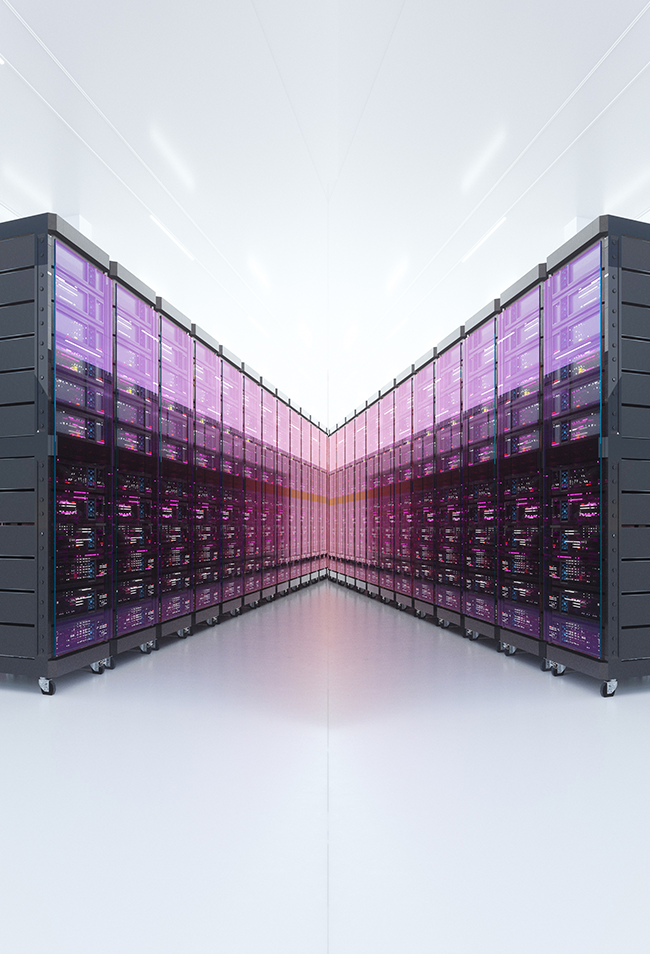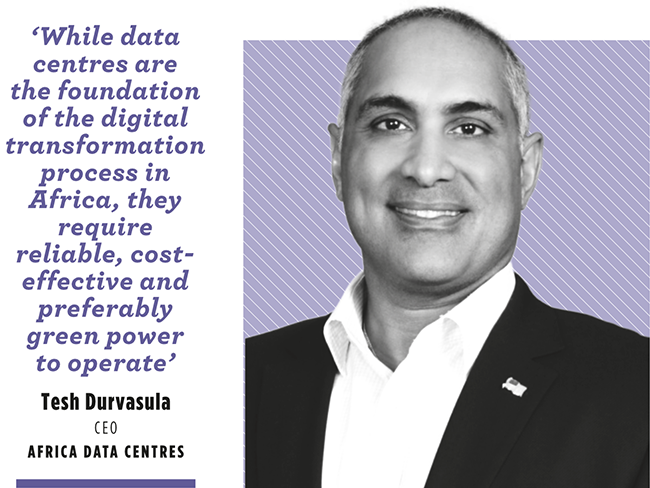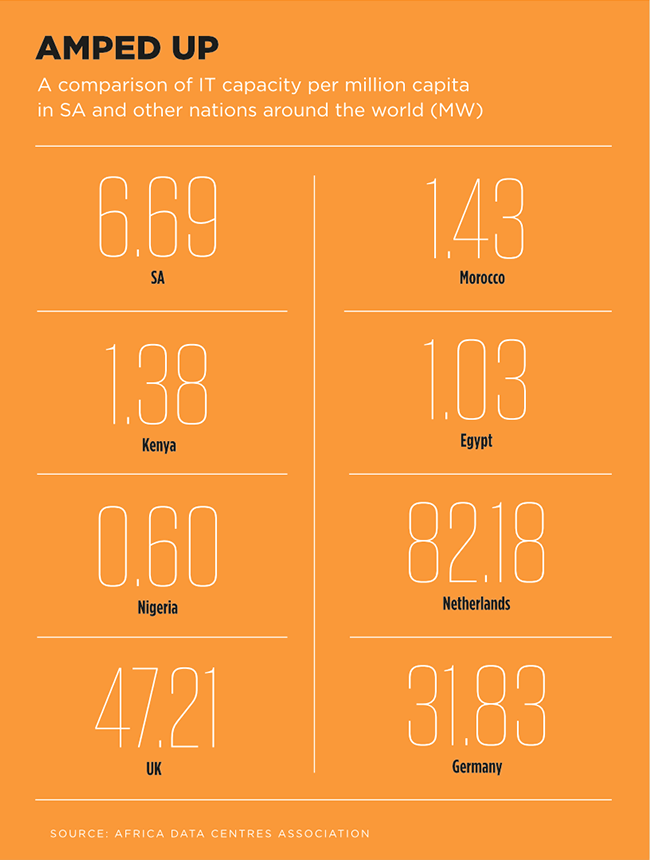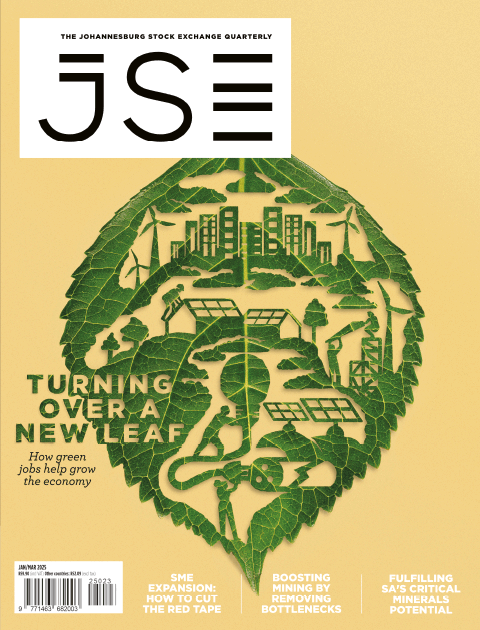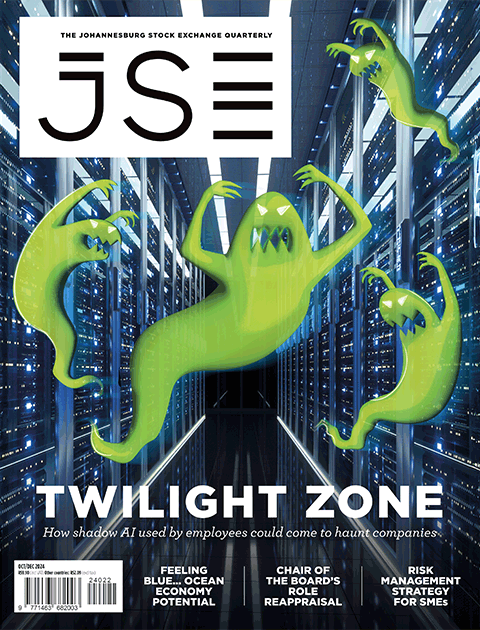‘The amount of data centre area in square metres on the African continent [1.3 billion people] is similar to the Paris or Amsterdam area, with an economy of 12 million people. That means there is a one for 100 ratio and shows the room for growth in Africa.’
That finding was from the State of African Data Centres report, compiled by the African Data Centres Association (ADCA) in 2020. In its latest research, Africa’s Key Data Centre Markets, the ADCA had the following to report. ‘In Q1 2023, the five markets [SA, Nigeria, Kenya, Morocco and Egypt] comprised over 800 MW of total IT power. This includes live and operational power as well as the development pipeline. It is important to note that SA accounts for over 408 MW of the total supply, with the majority of the western hyperscalers deploying in the market. Johannesburg and Cape Town are currently the only cities in Africa to have fully established cloud regions.’
Data centres play a pivotal role in our increasingly interconnected world, powering various digital services such as cloud computing, e-commerce and social media. However, the energy required to maintain these facilities is staggering.
According to a recent study by the South African Data Centre Association, data centres in SA consumed approximately 2.37 TWh of electricity in 2022. To put this into perspective, this accounts for nearly 1.3% of the country’s total electricity consumption. Such significant energy usage raises concerns about the environmental impact, as well as the strain placed on SA’s (creaking) power infrastructure.
One effective strategy data centre companies are adopting is investing in their own renewable-energy sources. By establishing their renewable-energy plants, these firms can not only offset their energy consumption but also contribute clean power to the national grid.
Amazon was among the first to follow this route, setting up a 10 MW solar plant in the Northern Cape. It came on-stream just more than a year ago and, according to Amazon, ‘is expected to generate up to 28 000 MWh of renewable energy per year, which equals the annual electricity consumption of over 8 000 average South African homes’.
It consists of more than 24 000 bifacial solar panels (which capture sunlight on both sides) and covers an area of 20 ha. The solar panels track the sun throughout the day, absorbing solar energy from the sky and reflected light from the ground, says Amazon, and it will result in avoiding an estimated 25 000 tons of carbon emissions annually, the equivalent of removing 5 400 cars from the roads in SA.
‘Amazon is committed to working with governments and utility suppliers around the world to help bring more renewable-energy projects online,’ says Nat Sahlstrom, director of energy at Amazon Web Services.
Other companies have also been very proactive in securing a reliable stream of renewables. In March this year, for example, African Data Centres signed a 20-year power purchase agreement (PPA) with DPA Southern Africa for the supply of 12 MW of solar energy.
‘Through this agreement, our customers will benefit from a sustainable data centre,’ says Tesh Durvasula, CEO of Africa Data Centres in a statement. ‘While data centres are the foundation of the digital transformation process in Africa, they require reliable, cost-effective and preferably green power to operate. Our partnership with DPA will also help in reducing our reliance on the strained South African national grid, enabling us to play our part in alleviating the current energy challenges facing the country.’ Each year, he says, the data centre industry must try to accommodate two fundamental goals.
‘Firstly, it must meet the demand for the capacity needed to support the ever-increasing range of high-performance computing, digital services, edge environments and connected devices. Secondly, it must find ways to lower energy usage and reduce its universal impact resources that are already stretched to the limit.’
Africa Data Centres says it has a target to power all its data centres with clean, zero-carbon sources of energy.
‘This new deal will provide over 30% of our South African data centres with renewable energy, a great stride forward in our aim to reach carbon neutrality,’ says Durvasula. ‘By signing this latest PPA, we will reach our second milestone towards carbon neutrality. Our first milestone was to optimise our roof space with solar, and this latest deal will see us utilising the recently approved wheeling mechanism within South Africa’s municipalities.’
In January, Teraco, one of SA’s leading data centre providers, announced that it had secured a syndicated loan facility worth R11.8 billion. In a statement the company said the funding is ‘for the expansion of Teraco’s key interconnection hubs located within the Isando, Bredell and Cape Town campuses, and a significant renewable energy-generation programme aligned to the company’s long-term environmental, social and governance goals. Teraco’s new data centre builds are designed to put sustainability first, minimise environmental impact, reduce energy consumption and minimise water usage’.
Teraco has committed to powering its data centre colocation facilities with 50% renewable energy by 2027 and 100% by 2035. It will also maximise its combined rooftop solar footprint across its facilities to 6 MW by 2023.
‘Teraco is dedicated to protecting, connecting and growing the enterprises and ecosystems shaping Africa’s digital future sustainably and responsibly. As we continue our journey, our ESG goals form the cornerstone of how we grow our business, engage with employees and suppliers, support our clients and minimise our impact on the environment,’ says Samuel Erwin, Teraco’s CFO. ‘We are committed to managing our environmental impact sustainably by optimising our use of energy and natural resources. We remain focused on efforts to create energy-efficient data centres that address our environmental challenges, and we’re grateful for the continued support from partners that share our vision.’

